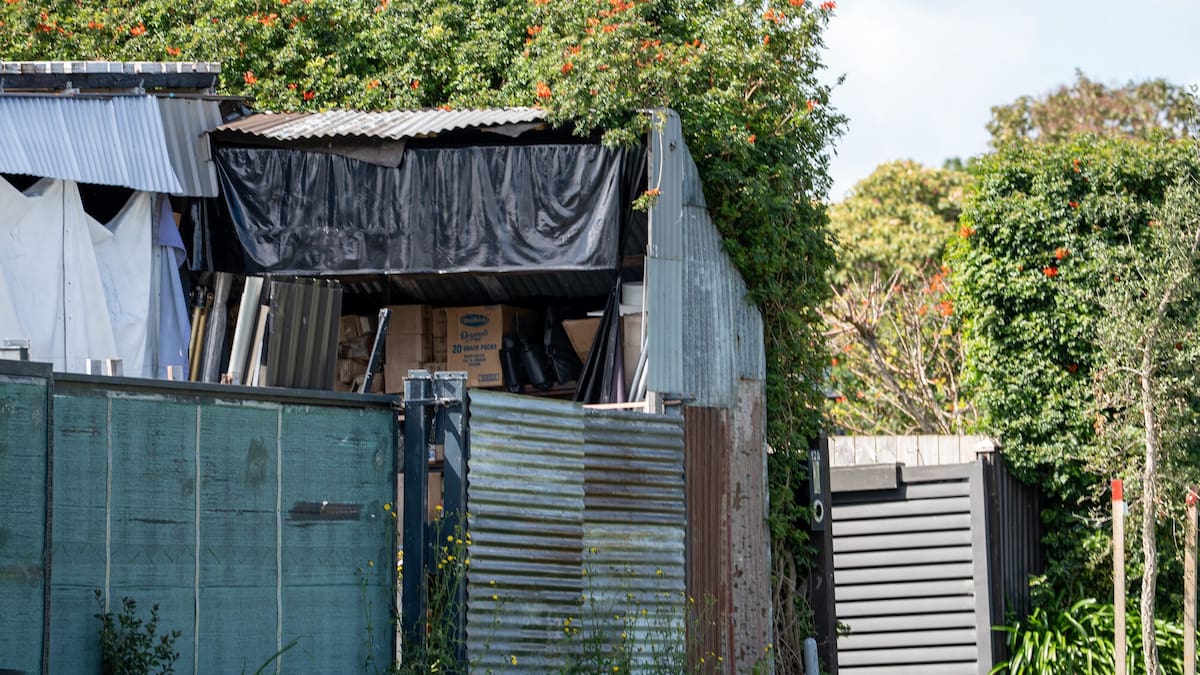“I am just using my language skills to communicate to each party,” he told the court in an affidavit.
Pan also said he is overseas and will stay there for medical treatment.
The house at 14 Mona Ave, Māngere Bridge, is on the edge of the Māngere Inlet (right). Image / Google Maps
Neighbours have been complaining about the state of the property for years, judging by social media posts dating back to 2017.
The Auckland Council has been trying to get something done about the fences and other unlawful structures since 2020.
This has involved taking the matter to the Environment Court – twice.
The property with its derelict house on the edge of the Māngere Inlet last changed hands for $677,000 in 2015.
The ratings valuation on the property reached $940,000 in 2021 but dropped back to $660,000 in the Auckland Council valuations released last year.
All of that valuation is for the section. For ratings purposes, the council considers the value of the “improvements” or house and associated structures to be zero.
Court documents show the front boundary fence is 3.7m tall at its highest point.
The fence on the southern boundary is about 2.6m in height.
Council officers first issued an abatement notice in 2020 requiring the fences to be reduced in height.
Auckland Council says the fence and structures at the property have adverse effects on the residential neighbourhood and adjoining properties. Photo / Alyse Wright
Wang appealed the abatement notice and the issue was resolved through mediation, but further abatement notices were issued in 2023 after a compliance visit.
The council wants the front fence to be reduced to a maximum height between 1.4m and 1.8m, and 2m for the side fence.
The council also wants “unlawful buildings” – a carport and workshop or storage area – on the front and southern side of the property to be removed.
The issue came before the Environment Court for the second time last year after Wang and Pan lodged further appeals.
Judge Melinda Dickey and Environment Commissioner Ruth Bartlett have now disallowed those appeals, ordering the fence should be lowered and the structures removed by December 8.
In its submissions to the court, the council said the structures at the property were “permanent installations” that had been in place for a long time.
“They cause adverse effects on the amenity values of the established residential neighbourhood and adjoining properties.”
A council officer gave evidence that the property appeared to be a “construction depot”, with photos showing stored materials. This is not a permitted activity within the surrounding residential zone.
Wang and Pan said the structures were temporary and would be removed when construction works at the property were completed.
Pan gave evidence that renovation works were going on at the property, the structures were accessory to that, provided shade for workers and materials, were not permanent and would be removed after construction was finished.
Judge Dickey and Commissioner Bartlett, however, said they did not accept this.
“The activity description requires that the site be an active construction site. That is not supported by Mr Pan’s evidence,” they said.
“We find that the … breaches are substantial exceedances, not minor breaches,” their decision said.
“These breaches cause adverse effects on the residential character and amenity of the neighbourhood.”
Ric Stevens spent many years working for the former New Zealand Press Association news agency, including as a political reporter at Parliament, before holding senior positions at various daily newspapers. He joined NZME’s Open Justice team in 2022 and is based in Hawke’s Bay.

